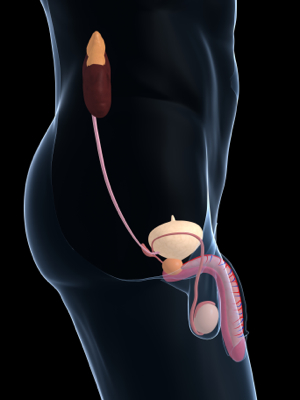
Cystoscopy Procedure for Your Prostate
The urologist may insert a camera catheter, also known as a cystoscopy procedure, to do a prostate examination if they suspect a serious problem.
Also known as a bladder scope, the camera allows the doctor to see the inside of the prostate and bladder. An enlarged prostate can cause problems in the bladder, and a cystoscopy procedure can enable your doctor to see what’s going on inside your prostate and bladder.
This procedure enters not through the rear as in a normal DRE (Digital Rectal Examination) but the front — down the penis inside the urethra through the prostate gland and into the bladder.
The cystoscope has lenses that allow your doctor to see inside the prostate, bladder and urinary tract. The images usually appear on a computer screen as she guides the scope.
The cystoscope has lenses that allow your doctor to see inside the prostate, bladder and urinary tract. The images usually appear on a computer screen as she guides the scope.
Cystoscopes come in different sizes: from the thickness of a pencil, to approximately 9mm (3/8") and have a light at the tip. Many cystoscopes have extra tubes to guide other instruments for surgical procedures to treat urinary problems.
Yup, this one can hurt especially if done fast, as my urologist did! The catheter and camera size are not small. They did use a local anesthetic gel, xylocaine, but it did not make much difference to me.
Years later, a new urologist did the same procedure in the hospital using IV sedation, and it was not painful. So request a painless procedure with IV sedation for your comfort.
Your doctor will have a much better idea of the condition of your prostate and bladder after this procedure. He can tell whether it's enlarged or infected and can see the impact on the bladder. The bladder gets irritated as the prostate enlarges because of incomplete urination.
You may have some pain while urinating afterwards as the ammonia in your urine touches the sensitive tissues that may have been irritated by the scope.
This will ease with each urination. Some blood spotting is also possible but this too will pass.
If constant bleeding does happen, then that is rare and abnormal so get back to your doctor quickly.
Later, I will add much more about male catheters and catheter insertion as well as how to use them safely when instant relief is required for a blocked prostate or check out my book, Healthy Prostate.

Return from Cystoscopy Procedure to Prostate Examination
Got a Question or Comment about your Prostate Health?
This is the place to post them because I get them immediately.
I like to share them and the answers I provide so others can benefit too.
Your email is kept completely confidential. If you want to be notified when the question is answered, please make sure to add your email address. I don't collect or store these emails after they are used to send you your answer, and they are not posted with your question.
What Other Visitors Have Asked or Said
Click below to see contributions from other visitors to this page...
Catheter After Cystoscopy
After Cystoscopy Is use of a Catheter always needed?
-----------
Ron here...
Not if you didn't need it before.
Enlarged prostate and anti-bioethics
Many thanks for your comments and response in regards to my question the other day about a foley catheter. It helped very much. Today, I went to Walgreen's …
Blood in catheter bag after cystoscopy
Why do I bleed off and on after cystoscopy, I have a catheter for about 7 weeks waiting on surgery.
-------
Ron here...
If it is bright red then …
Poor flow after cystoscopy
Had a cystoscopy with bladder distention to check go IC which was not present. After the procedure peed a great deal of blood for the first few times, …
cysto/biopsy of the prostrate
What happens during a cystoscopy of the prostate,from the moment I enter the office to completion....how long, preparation and is it done with a flexible …
infection from cystoscopy
Can you get a prostate infection from a cystoscopy procedure?
-------------------
Yes, any invasive procedure carries the risk of infection. It depends …
examination question.
I had the examination yesterday - When the doc.started the procedure there was something blocking the instrument - the doc pushed harder and eventually …
cystoscopy procedure
Is this just looking or will something happen that will cause me to urinate better ? If there is nothing more than an enlarged prostrate can anything …
Post cystoscopy care
Is there anything one should do or avoid doing after this procedure?
----------------
Ron here...
No fun!
Just notice any unusual symptoms …
Lower Abdominal Pain and pain when urinating: Cystoscopy Procedure
Hi, I have been having Lower Abdominal Pain and pain when urinating for over 1 month. I have been treated with antibiotics for Bladder, Urinary tract and …
Cystoscopy showed inflamed prostate/urethra
Hi.Me 50 and suffering last few months. Symptoms are a need to urinate small amounts all the time,pain in urethra after urinating, and prostate spasms. …
cystoscopic prostate exam
My husband was advised that in order to get this procedure, he would need to be circumcised, as the opening of his urethra was not large enough for the …
Written by Ronald M Bazar,
~BCom, McGill University
~MBA, Harvard University
~the author of this website.

New Books by Author of This Site
Note Dear Reader...
You must change your diet by stopping those foods that are triggering your condition and replacing them with new ones that nourish you and your prostate.
Then combined with a high quality supplement, you are putting yourself on the road to healing.
There are no shortcuts. Just good changes and little by little you will get better. My books and this site tells you how.
Sleep Secrets by the author of this website.










